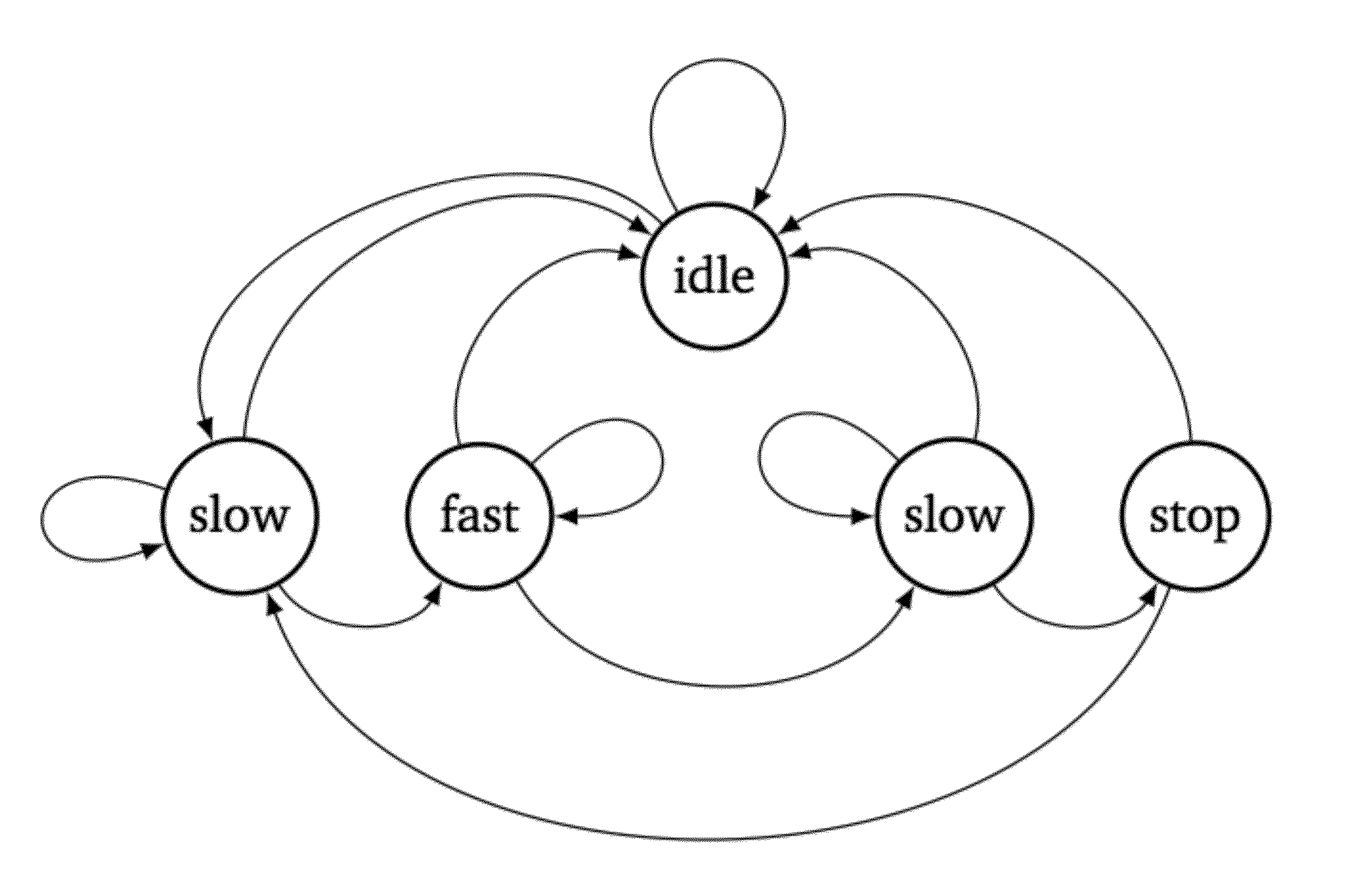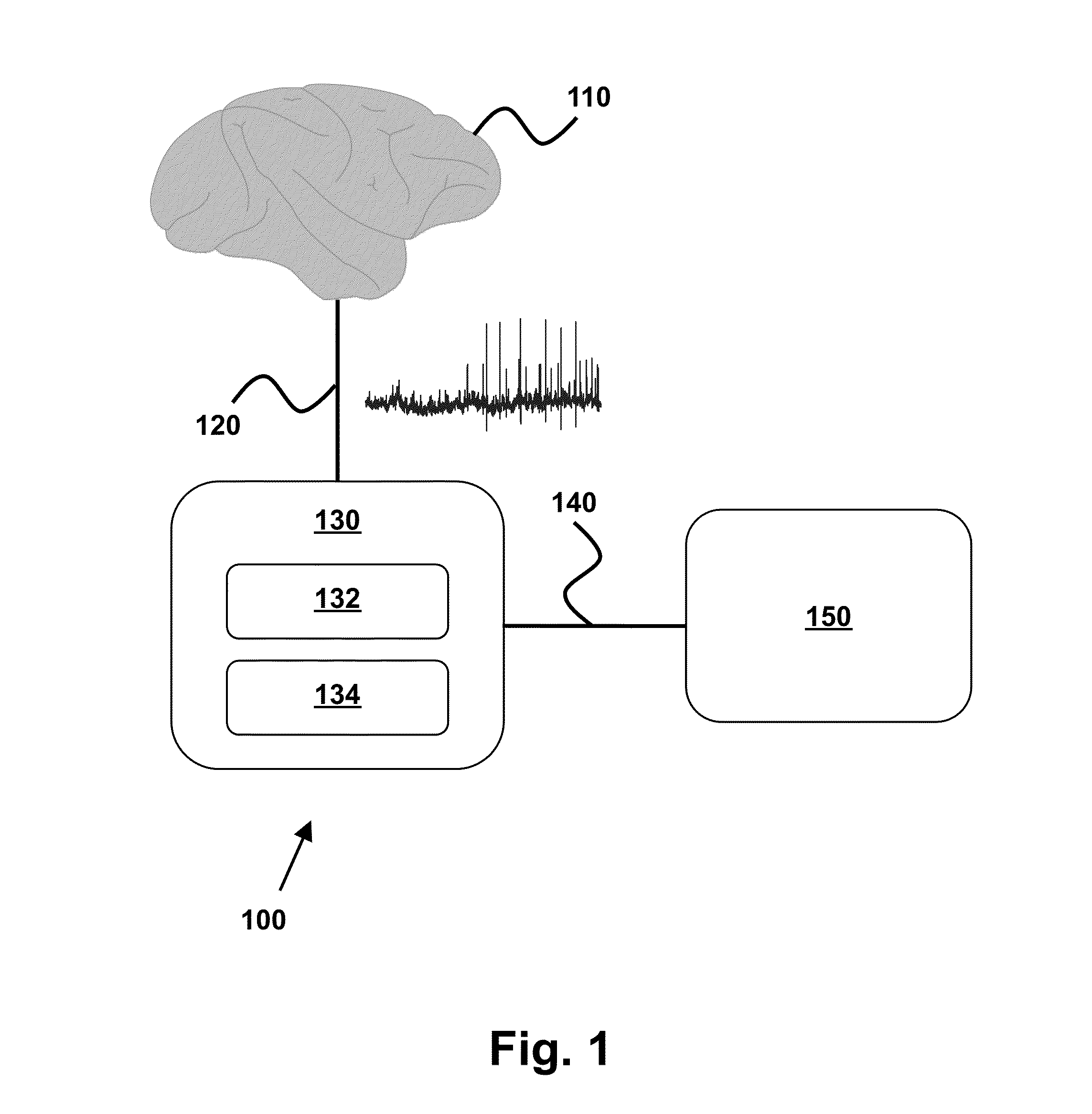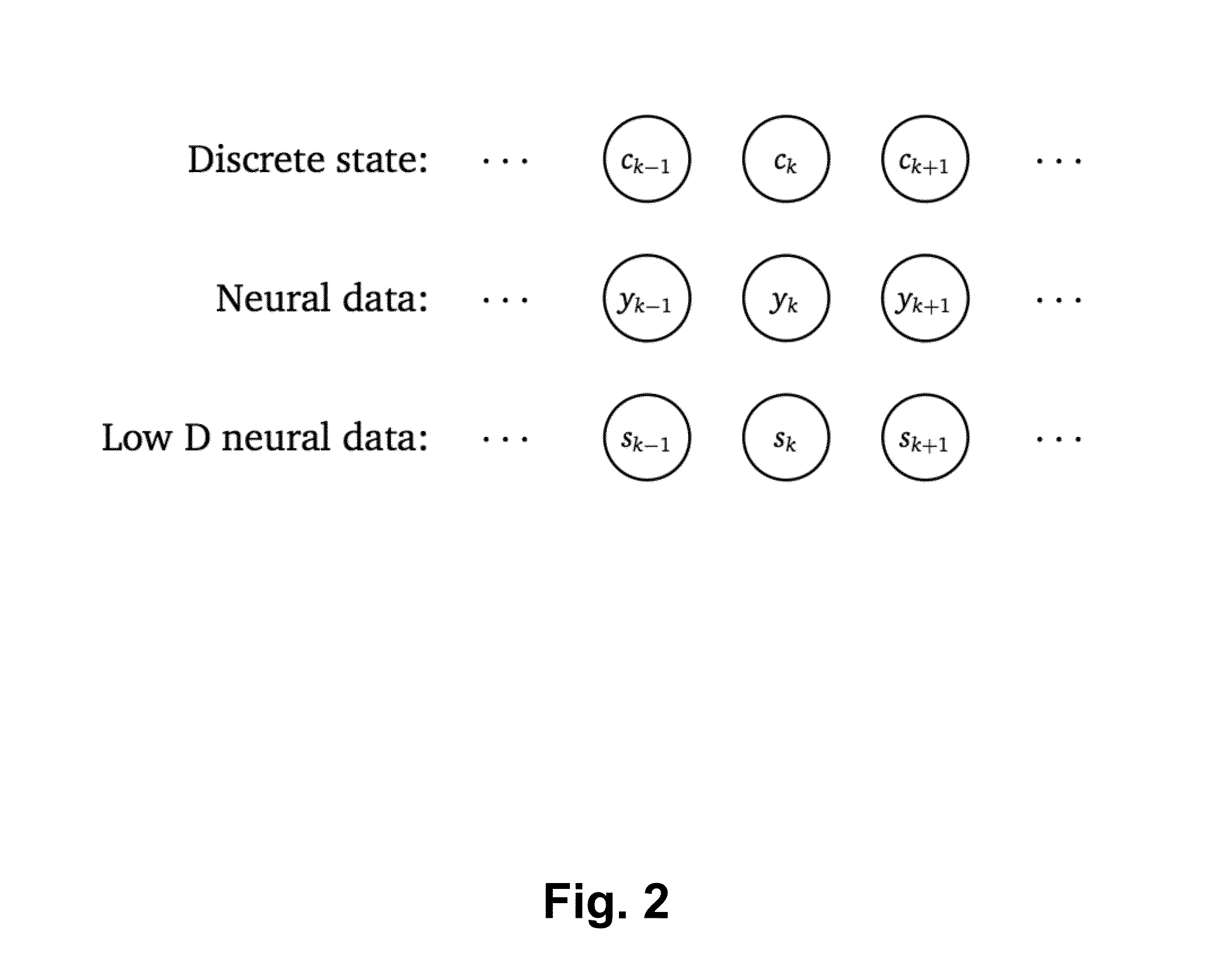Brain Machine Interface utilizing a Discrete Action State Decoder in Parallel with a Continuous Decoder for a Neural Prosthetic Device
a neural prosthetic device and discrete action state technology, applied in the field can solve the problems of vastly limited utility and achieve the effect of improving the performance of neural prosthetic devices
- Summary
- Abstract
- Description
- Claims
- Application Information
AI Technical Summary
Benefits of technology
Problems solved by technology
Method used
Image
Examples
Embodiment Construction
[0016]Brain-machine interfaces (BMIs) 130 translate neural information (brain signals 120) into useful control signals (FIG. 1). They aim to guide electronic systems such as computer cursors and robotic prosthetic limbs. For continuously controlled systems, one of two methods has been employed to signal a stop or selection. One method is to hover for a specified time over the desired target. An alternate approach is to predict the intended state and transmit a “click” signal, which can speed up selection rate.
[0017]In this invention, we advance brain machine interfaces 130 by having a continuous control system or decoder 132 in parallel with a discrete action control system or decoder 134. An example of a continuous decoder that could be used was described in U.S. application Ser. No. 12 / 932,070 filed Feb. 17, 2011 which is an invention by the same group as the present invention. However, this invention is not limited to only that particular continuous decoders since other continuou...
PUM
 Login to View More
Login to View More Abstract
Description
Claims
Application Information
 Login to View More
Login to View More - R&D
- Intellectual Property
- Life Sciences
- Materials
- Tech Scout
- Unparalleled Data Quality
- Higher Quality Content
- 60% Fewer Hallucinations
Browse by: Latest US Patents, China's latest patents, Technical Efficacy Thesaurus, Application Domain, Technology Topic, Popular Technical Reports.
© 2025 PatSnap. All rights reserved.Legal|Privacy policy|Modern Slavery Act Transparency Statement|Sitemap|About US| Contact US: help@patsnap.com



